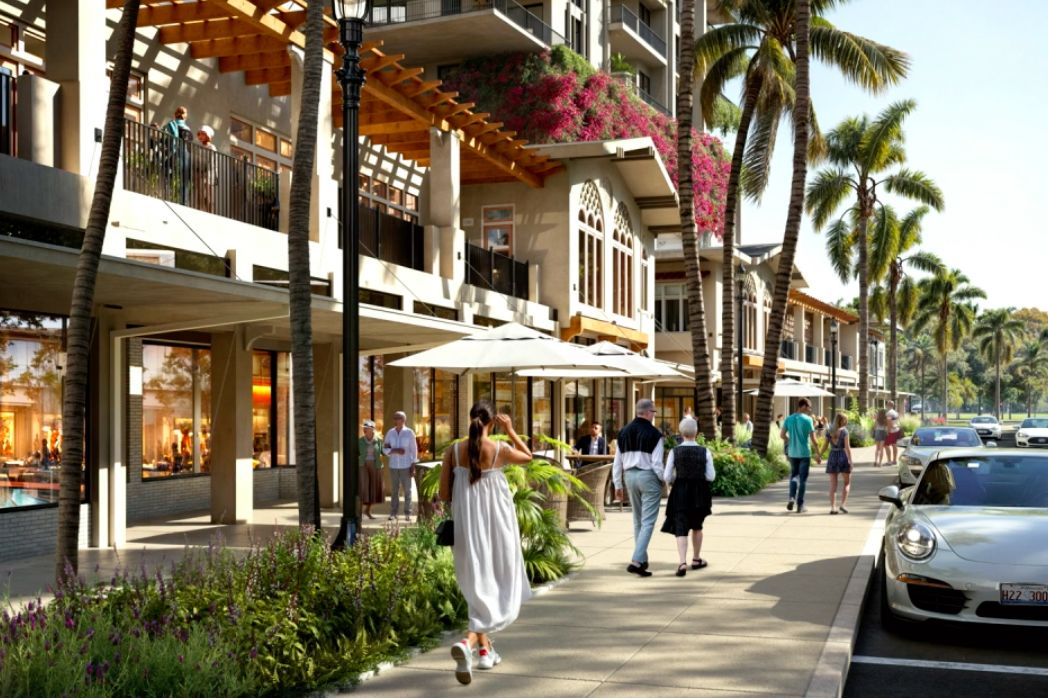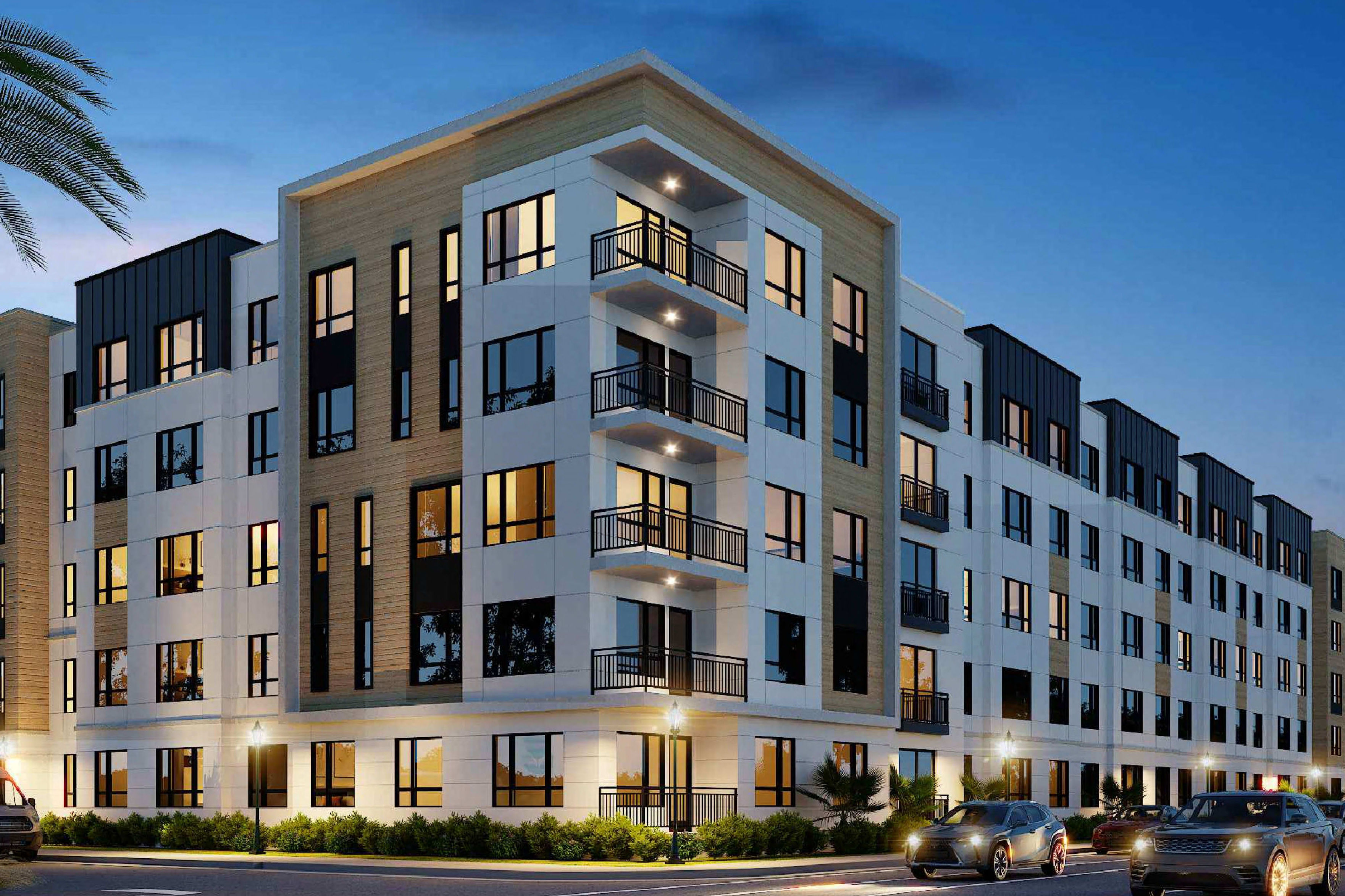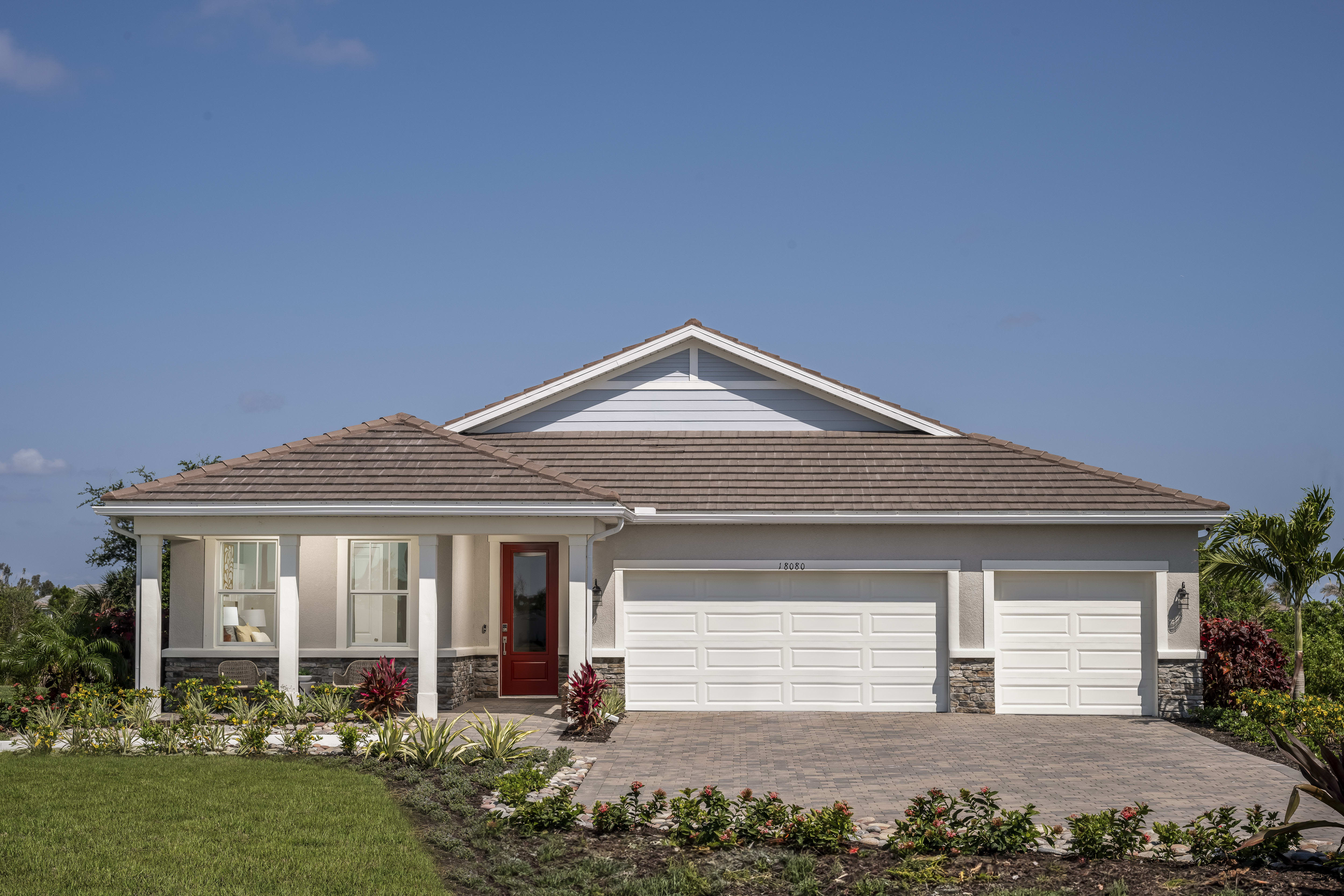This Almost Century-Old Home Was One of the First Built on Venice Island

Image: Prion
It takes a lot of love to keep an almost 100-year-old home standing strong—especially one that's just blocks from the beach and Florida's forever humid air. But for the past 22 years, that’s what Shari Valencic did.
The Venice High School teacher’s historic home is one of the first ever built on Venice Island. Constructed during the Florida land boom of the 1920s, 326 Pedro St. was originally part of the Brotherhood of Locomotive Engineers' (BLE) original development. BLE was at the time one of the country’s largest labor unions, and it hired city planner John Nolen, who brought European-style, walkable communities to the United States in the early 20th century.
Today, the home is on the market for $1.2 million.

A central breezeway connects the original front part of the home to the newer back addition.
Image: Prion
Done in the original Mediterranean Revival style that marks much of the palm-lined street’s charming barrel roof tiled homes, Valencic’s house was designed by architects Stewart Walker and Leon Gillette of the nationally acclaimed New York-based firm Walker & Gillette. (Gillette also designed the historic Hotel Venice on Nassau Street that today serves as a retirement community.)
Valencic's home was originally built for J.M. Scott, accountant for the BLE. Its second homeowner was H.N. “Bud” Wimmers, an original Venice councilman and the city’s first real estate agent. He and his wife Mildred moved in with their daughter Patricia in 1942 and lived there for 33 years.

The original fireplace is made of coral and limestone from nearby Venice Beach.
Image: Prion

The windows are original.
Image: Prion
Wimmers is revered by local historians for being the man who “loved Venice so much that instead of leaving, he helped bring it back," says Venice native Gary Youngberg, whose grandfather befriended Wimmers back in the ‘20s. In fact, the Wimmers opened Venice's first real estate agency on Miami Avenue, just a block northeast of the house.

The two buildings that make up 326 Pedro St. span 3,344 square feet.
Image: Prion
When the boom went bust and ushered in the Great Depression, the BLE, along with many others, abandoned the area, and Venice’s population dropped significantly. But Wimmers stayed. “He saw that it wasn’t doing well financially, but believed it had a future and was committed to helping it come back," says Youngberg. In 1932, the Kentucky Military Institute (KMI) needed a new winter campus, and Wimmers saw an opportunity to bring them to occupy the then-empty Venice Hotel.

Kitchen
Image: Prion
“The KMI was one of the very first things to help pry Venice out of the severity of the Depression, and it sparked the community,” says Youngberg, who is also a volunteer with the Venice Area Historical Society and a member of Venice Heritage Inc. "[Wimmers] pulled together the people to make it happen. He was a go-to guy and a connector."
Wimmers was also credited for connecting the Ringling Bros. & Barnum and Bailey Circus to Venice, which set up its winter home there in 1960, drawing tourists and exposure to the area.
Fast forward to 2001. Valencic, 55, bought the home for $335,000 and made changes to make it work for her family, which at the time included her two young daughters. With local architect Mark Bebee, she added a seamlessly styled two-level addition to the back of the original home, which added on two en-suite bedrooms and a great room—an ideal space for her mother, Fran, to live. There’s also the original detached, two-level garage apartment, which used to be a carriage house. In all, the property spans 3,344 square feet and has six bedrooms and five bathrooms.

One of six bedrooms.
Image: Prion
Plus, the historic elements that make it so charming endure. The fireplace is original coral and limestone rock from Venice Beach.
“The workers who built these homes went to the beach to eat their lunch, and they would carry back rocks they found there and used them in my fireplace,” she says. "The plaster work was done by artisans who applied it with horsetail brushes. The doorknobs are original glass due to a dearth of metal at the time. It also still has many of the original restored light fixtures and arched windows with panes that are each unique with bubbles and tiny dings in it." In the garage apartment, the original heart of pine floors remain.

Bedroom
Image: Prion
But perhaps what’s most important and valuable to the home is what’s invisible to the eye.
When Valencic first bought the home, she had to completely rewire it and update the original, cloth-covered wires. “It was very expensive, but now I have modern electricity and more than one outlet in every room," she says. "Now you can plug in a flat iron and electric toothbrush at the same time!"
There’s also more storage space, since “the largest closet was 18 inches. You can't expect families today to pare down their lives to fit in an 18-inch closet.”
Then there was the matter of the home's indoor forest. During the first few years in the home, Valencic's then 3-year-old said there was a tree growing in the toilet—and she was right. Vegetation had overtaken the original clay sewer lines and they had to be replaced. She also had to remove multiple layers of rock wool insulation in the attic and have it replaced for health and efficiency’s sake.
"Now, I have no fear of home repair," she says. But since the kids have grown and have moved away, she and her husband would like to downsize and make room for a new kind of adventure instead.

Great room in the newer, back addition.
Image: Prion
Although the home is located in an architecturally preferred district with restrictions on facades, the address isn’t historically designated, and if a buyer wanted to, they could demolish it.

Kitchen in the addition of the home, which is a full mother-in-law suite.
Image: Prion
“As a lifelong teacher, [owning an old home] has been an economic sacrifice," Valencic says. "It's been joyful, but when [these homes] are demolished, I understand. It’s incredibly expensive to maintain them and that’s always the challenge.”
“Now these homes in Venice are coming into their second century," she continues. "If the city wants them around for 200 years, they need to be actively involved in their preservation and support homeowners who are willing to give their blood, sweat, tears and money.”

One of five bathrooms.
Image: Prion
Valencic doesn’t expect to break even on what she’s put into the home over the years. “But I didn't buy this house to make money off of it,” she says. “I bought it to be a happy, lovely place to raise my daughters. Living on the island was always a dream for me and I took advantage of the best it has to offer. We walk to dinner and patronize the small businesses. I’ve walked over to Venice Beach for yoga for 16 years. I knew it would be the best to live the good life Venice has to offer.”

Outdoor seating area.
Image: Prion
So far, agents Laura Singer and Jennifer Fisher of Premier Sotheby’s International Realty have noted interest from all kinds of people. “The home is so unique and has three separate living areas, so it can be adapted to a young family or an extended, multi-generational family with a true in-law suite and garage apartment,” says Singer.
“Lots of people who love local history come just to see it and marvel at the details," says Fisher.
"My big message," says Valencic, "is it can't have owners. It needs stewards."
Interested? Call Jennifer Fisher (678) 472-6005 or Laura Singer (941) 914-8490, both of Premier Sotheby's International Realty.



